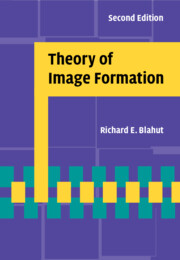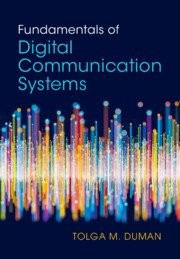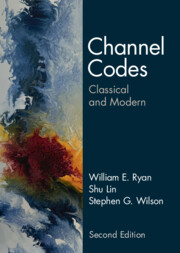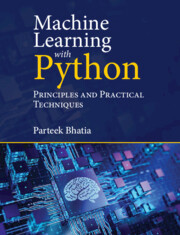Refine search
Actions for selected content:
6829 results in Communications and signal processing
5 - Apertures and Radiation Patterns
-
- Book:
- Theory of Image Formation
- Published online:
- 17 April 2025
- Print publication:
- 24 April 2025, pp 167-206
-
- Chapter
- Export citation
4 - Optical Imaging Systems
-
- Book:
- Theory of Image Formation
- Published online:
- 17 April 2025
- Print publication:
- 24 April 2025, pp 119-166
-
- Chapter
- Export citation
13 - Passive and Baseband Systems
-
- Book:
- Theory of Image Formation
- Published online:
- 17 April 2025
- Print publication:
- 24 April 2025, pp 521-556
-
- Chapter
- Export citation
8 - Likelihood and Information Methods
-
- Book:
- Theory of Image Formation
- Published online:
- 17 April 2025
- Print publication:
- 24 April 2025, pp 301-349
-
- Chapter
- Export citation
1 - Introduction
-
- Book:
- Theory of Image Formation
- Published online:
- 17 April 2025
- Print publication:
- 24 April 2025, pp 1-29
-
- Chapter
- Export citation
14 - Data Combination and Tracking
-
- Book:
- Theory of Image Formation
- Published online:
- 17 April 2025
- Print publication:
- 24 April 2025, pp 557-574
-
- Chapter
- Export citation
11 - Radar Imaging Systems
-
- Book:
- Theory of Image Formation
- Published online:
- 17 April 2025
- Print publication:
- 24 April 2025, pp 437-479
-
- Chapter
- Export citation
Dedication
-
- Book:
- Theory of Image Formation
- Published online:
- 17 April 2025
- Print publication:
- 24 April 2025, pp v-v
-
- Chapter
- Export citation
Index
-
- Book:
- Theory of Image Formation
- Published online:
- 17 April 2025
- Print publication:
- 24 April 2025, pp 609-622
-
- Chapter
- Export citation
Bibliography
-
- Book:
- Theory of Image Formation
- Published online:
- 17 April 2025
- Print publication:
- 24 April 2025, pp 590-608
-
- Chapter
- Export citation
10 - The Woodward Ambiguity Function
-
- Book:
- Theory of Image Formation
- Published online:
- 17 April 2025
- Print publication:
- 24 April 2025, pp 399-436
-
- Chapter
- Export citation
12 - Radar Search Systems
-
- Book:
- Theory of Image Formation
- Published online:
- 17 April 2025
- Print publication:
- 24 April 2025, pp 480-520
-
- Chapter
- Export citation
Frontmatter
-
- Book:
- Theory of Image Formation
- Published online:
- 17 April 2025
- Print publication:
- 24 April 2025, pp i-iv
-
- Chapter
- Export citation
15 - Phase Noise and Phase Distortion
-
- Book:
- Theory of Image Formation
- Published online:
- 17 April 2025
- Print publication:
- 24 April 2025, pp 575-589
-
- Chapter
- Export citation
Acknowledgments
-
- Book:
- Theory of Image Formation
- Published online:
- 17 April 2025
- Print publication:
- 24 April 2025, pp xvi-xviii
-
- Chapter
- Export citation

Theory of Image Formation
-
- Published online:
- 17 April 2025
- Print publication:
- 24 April 2025

Fundamentals of Digital Communication Systems
-
- Published online:
- 10 March 2025
- Print publication:
- 23 January 2025
-
- Textbook
- Export citation

Channel Codes
- Classical and Modern
-
- Published online:
- 06 March 2025
- Print publication:
- 21 November 2024
-
- Textbook
- Export citation

Machine Learning with Python
- Principles and Practical Techniques
-
- Published online:
- 22 February 2025
- Print publication:
- 31 January 2026
-
- Textbook
- Export citation
4 - Digital Information Sources
-
- Book:
- Fundamentals of Digital Communication Systems
- Published online:
- 10 March 2025
- Print publication:
- 23 January 2025, pp 138-161
-
- Chapter
- Export citation
